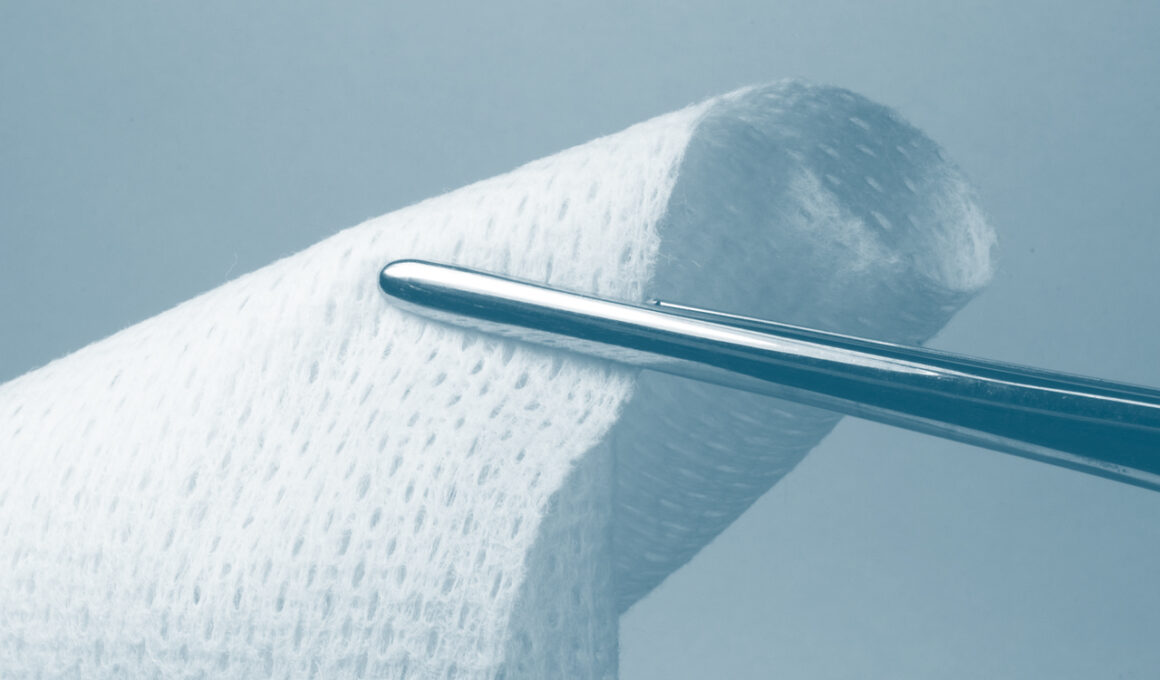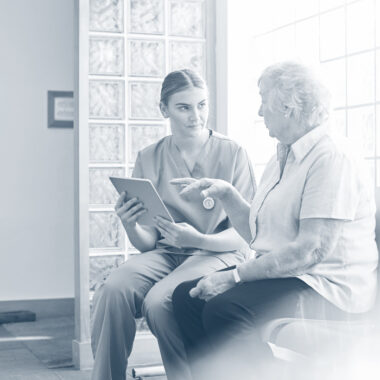Premises
Let’s start with some irrefutable scientific certainties. During embryonic and fetal life we all live in a sterile aquatic world (amniotic fluid), as in a space capsule (placenta and amniotic sac). Yes, just like a fish in an aquarium!
From our mother we receive nourishment (through the umbilical cord) and immune protection, cuddled at the right temperature by the reassuring sound of the maternal heartbeat.
The problems begin when the water sac breaks and we face external life through the birth canal. The umbilical cord is interrupted by the midwife, who cuts it and then helps us expel the amniotic fluid that we still have in the pulmonary alveoli with the first cry, which is described as a desperate cry, almost as if we realized that from that moment on we are alone interact with the immense world of fortunately invisible microorganisms. This is the ecosystem we were talking about at the beginning and which will accompany us throughout our lives and after death will contribute to the decomposition of our mortal remains.
It should be noted that 99% of the DNA of this ecosystem is given precisely by the associated microorganisms, which will gradually inhabit the newborn in all the organs and systems. Life therefore begins as a continuous struggle for survival. Our mother will still give us help, who with colostrum and milk will provide us not only with what we need to grow, but also with many defensive antibodies, essential for our survival, as our immune system is still forming and
therefore immature. Then gradually our defensive army will be enriched with increasingly complete and efficient weapons with the increasingly numerous and safe vaccinations in childhood. Then it entrusts everything to our immune system, which matures and is enriched with antibodies and defensive cells increasingly prepared for war.
But in this very threatening world, fortunately we can also have the help of some allied “friendly bacteria”. In fact we have pact with then, based on the “do ut des” rule, so in a nutshell we help them to live, they help us in the fight against pathogenic enemies while also supporting our immune system. Alliance, symbiosis, mutual convenience, we can put it however we want. But both we and they need and benefit from each other.
But be careful, because if our body weakens, for example because it is undermined by metabolic and/or neoplastic pathologies, or even because it simply undergoes physiological aging, and our immune system loses strength, it is possible that these allies of ours also become suddenly
they too are our enemies!
“But what does it matter? – you might think – we always solve everything with antibiotics!”
Interaction of Human-Microorganisms of our Ecosystem
What has been said so far can lead us to understand how important it is to move with judgment and a “thinking mind” when giving therapies and especially when we intend to use antibiotic therapies. We know in fact that antibiotics have no effect, and are therefore useless, against viruses and fungi and that, used mostly indiscriminately, they cause deaths and injuries in enemy camps but unfortunately also in friendly camps and can also cause two other very serious effects. harmful: the selection of the most virulent and aggressive pathogenic bacteria and antibiotic resistance. Furthermore, by destroying not only the enemies but also the friendly
bacteria, for example in oral therapies the intestinal flora (intestinal microbiome), cause abdominal pain and serious diarrheal syndromes, which we have long learned can only
be resolved by reintegrating the friendly intestinal flora with lactic ferments, that is, friendly bacteria.
Biofilm: what are they?
The premise was long, but it was certainly essential to understand what relationship we have with bacteria above all, which are so many, which we must respect, which we can somehow keep under control, but which we will never be able to eliminate, because they are inside and above of us (every system has its own microbiome) and surround us like threatening and invisible presences. Hence the need to carefully take care of the health of our body and its defensive immune system.
But what you need to know doesn’t end here.
When we get an acute wound or fight for days, months or even years with a chronic wound (skin ulcer), our first concern is that we open a window, a door or even a door to bacteria with the risk of infections. It is a legitimate concern and how it will end will depend above all on our immune defenses. The bacteria in particular will enter almost timidly one by one and defenseless at first free or, as they say, in planktonic form with the risk for them of being attacked and eliminated by war machines (leukocytes and macrophages) or missiles and bombs (antibodies). A local battle will therefore be unleashed, which can obviously result in the elimination of the aggressor or, on the contrary, in his progressive reinvigoration and ever greater reproduction (first contamination and then colonisation) with an ever greater possibility of arriving at an infection that is first local and then even remotely throughout the entire organism attacked, unleashing a global war, the outcome of which could even be fatal for our organism.
The bacteria, especially the most equipped and aggressive ones, obviously will certainly not remain inert and will organize themselves better and better, building their effective defensive barriers, in which they will host more and more colonies of the same family or even of different families, sometimes even viruses and fungi. It is precisely these protective forts that we call Biofilm.
But let’s try to understand it better with a practical example.
The example that is most frequently reported comes from dentistry.
Given that biofilms form more easily where there are heterogeneous contact areas, here we come to explain the birth of biofilms at the collar of the teeth in all of us. The first bacteria arrive here and together with food residues form dental plaque, an invisible film, which we can and must remove mechanically with a toothbrush and dental floss. If we do not do this regularly after each meal, tartar will slowly form due to the incorporation of mineral salts, especially calcium, from saliva into the plaque.
This is clearly visible, yellow or black in color and is tenaciously adhered to the teeth up to the gums and if left there it grows and detaches the gums themselves, also affecting the tooth enamel. Result: cavities form and increasingly serious gingivitis is triggered (local inflammation-infections) with the great risk of losing one or more teeth, sometimes even all (complete edentulism due to pyorrhea). To remove the tartar we must resort to a real mechanical debridement by our trusted dentist, never let our guard down, because the tartar easily reforms again.
We remember that more and more medical publications testify to us that oral hygiene is fundamental for our health and that sometimes the presence and persistence of calcific bacterial plaque, which we have seen to be a biofilm, can favor the appearance of even fatal ischemic events (stroke and myocardial infarction) due to the circulation by the bacteria, which live and reproduce actively here, of fibrin-like protein substances which favor intravascular blood coagulation (thrombosis).
This example of biofilm demonstrates that especially many pathogenic bacteria defend themselves from aggressive-defensive actions by evading our immune system, creating dangerous alliances with other families of bacteria, viruses and fungi and above all shielding and neutralizing the antibiotics administered especially locally, making this therapy useless. This gives rise to real condominiums of hostile microorganisms, which proliferate threateningly,
as they are protected by a glycoprotein capsule (glycocalyx) produced by themselves as if it were a wall.
Conclusive Considerations
When all this happens in a skin ulcer, to avoid even fatal dangers we only have three weapons:
- A targeted antibiotic therapy on culture swab with antibiogram, which allows us to selectively target often multiple pathogens with the right weapons, simultaneously replacing the friendly bacterial flora with the use of lactic ferments.
- A selective local disinfection avoiding traditional iodine-based products, which create scorched earth all around, killing, even for a short time, good and bad bacteria and destroying the repairing granulation tissue. Less aggressive products left as a local compress for a few minutes and then rinsed thoroughly: this is what not only the expert vulnologist, but all the healthcare personnel who work around our patients should suggest.
- A mechanical-chemical debridement to break down the walls of illegal condominiums built by the most aggressive microorganisms (Biofilm) to allow antibiotics chosen in a targeted and selective way and administered mostly systemically (orally, intramuscularly or intravenously) to work better and subsequent application of silver, copper or medical honey antiseptic dressings.
In conclusion we must put it out of our minds
- to heal an acute or chronic skin lesion it is necessary to destroy all the microorganisms that pass through it, because this is practically impossible, except for a few
minutes, and even harmful, because by putting everything on fire we risk losing the allied forces, made up of the microbes who are friends of our microbiomes. - all wounds should be flooded with strong local disinfectants and antibiotics, because enemy bacteria defend themselves inside biofilms and are mostly unassailable, as the condominium in which they live (glycocalyx) hides them from the radar of our immune system (evasion) and we can only hope to bring down these walls with a direct action (debridement). Furthermore, the disinfectant substances that we generally use, mostly iodine-based, oxidize, therefore essentially destroy, the repairing granulation tissue. It is certainly better to use more delicate disinfectants, using them only in case of real necessity and rinsing them thoroughly with physiological solution, after leaving them to act for a few minutes as a compress.
- swabs for culture and antibiogram examinations are useless. This may be true in the case of well-cleansed and granular wounds, while it is absolutely not true if the wounds show clinical signs of infection (redness, heat and perilesional edema, pain and bad odor). Indeed, in these cases they are indispensable for promptly establishing selective and targeted antibiotic therapy, mostly systemic and not local, without needlessly shooting in vain.
Finally, I underline the need to support our general health and our immune system, giving great importance to the right nutrition and hydration and treating and keeping underlying pathologies and co-pathologies under control.
Why?
I’ll just give you an explanatory example: an ulcer caused by a venous pathology will never heal in a stable way if we don’t treat the chronic venous insufficiency that caused it with drugs, elastic compression and/or surgery.




